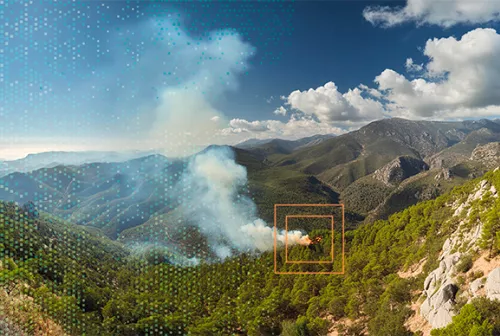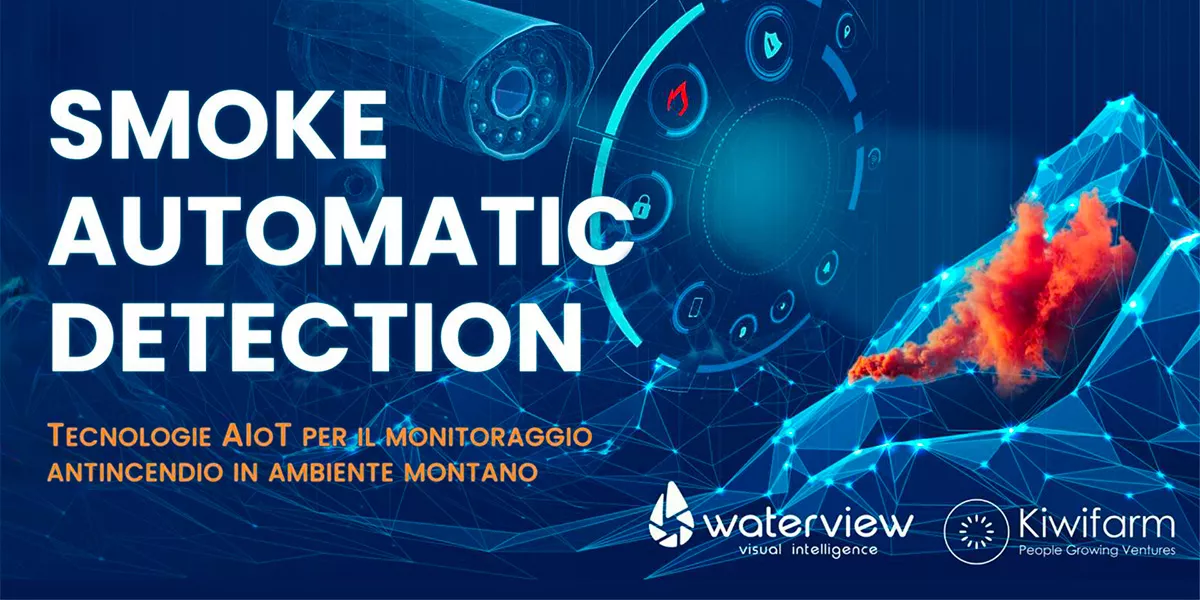Detecting mountain fires with AI: the first pilot project funded by NODES kicks off

On Monday, July 15th, at the Circolo del Design in Turin, SAD - Smoke Automatic Detection was presented. This project is funded through the Cascade Calls by the NODES innovation ecosystem under the European Union's NextGenerationEU (PNRR) program. It is the first in Europe to enable the timely detection of fire outbreaks in mountainous areas.
The monitoring is made possible through the installation of cameras equipped with Artificial Intelligence (AI) software on existing telecommunications infrastructure. The software works in real time to detect smoke plumes and fire outbreaks, and alerts promptly, thereby reducing the risk of fire spread.
The project's pilot phase began in Piedmont in July, in the Alta Valle di Susa, covering the municipalities of Bardonecchia, Oulx, and Sauze d’Oulx, with a total area of about 80 square kilometers. In this initial phase, 12 cameras have been installed on 5 telecommunications towers in a high fire-risk area: over the last 7 years alone, 4000 hectares of forest have been lost to fire.

“This project - explains Stefano Lo Russo, Mayor of Turin and the Metropolitan City of Turin - demonstrates how new technologies and artificial intelligence can provide concrete assistance to local administrations, particularly in terms of environmental protection and risk prevention. It is a particular source of pride as it is a project with roots in Turin and once again showcases our city’s role as a hub for technological innovation—a role we hope will further strengthen in the future, thanks to the significant contributions from our companies and our top universities".
SAD - Smoke Automatic Detection It is funded through the Cascade Calls of the NODES Program, which finances a total of 186 project proposals, involving over 310 businesses from the Northwest to the South of the country, providing more than 36.7 million euros in funding for research and innovation projects. The project falls within the thematic priorities of Spoke 4 of NODES - Digital innovation toward sustainable mountain, coordinated by the University of Valle d'Aosta.
"The Smoke Automatic Detection - SAD - project undoubtedly embodies the two cornerstones of the NODES Program: sustainability and digital technology, demonstrating that innovation is crucial for protecting our territory - says Stefano Corgnati, President of the NODES Ecosystem - All 186 projects funded by NODES move in this direction and are proof that our Ecosystem can make a concrete contribution to creating a cohesive, innovative regional system capable of enhancing ideas, skills, and developing the entrepreneurial fabric by stimulating technological transfer”.
The leading company of the project is WaterView, a Turin-based company that developed the smoCAM software—already used since 2023 in some protected areas. This software can process data from a network of cameras and, thanks to artificial intelligence, detect smoke plumes and flames in open environments, generating real-time alerts.
The monitoring network for the SAD project consists of 12 Axis Communications cameras installed on 5 mobile telecommunications towers by INWIT, Italy's leading tower operator. On each tower, the cameras are connected to a smart gateway produced by Eurotech, equipped with the Everyware Software Framework (ESF) and connected to the Everyware Cloud (EC) platform for the remote management of field devices. These observation points will be complemented by additional low-power devices in the visible spectrum, engineered by Kiwifarm, another beneficiary of the project.
The monitoring network will aim to automatically detect ongoing phenomena at even long distances, providing visual feedback and geolocated information to support the alerts. The Links Foundation has identified the risk areas using digital terrain analysis technologies, while INWIT has provided the widespread infrastructure that hosts the sensors.
"SAD - comments Paola Allamano, CEO of WaterView - is a project we are very proud of. Applying our computer vision technology to significant areas of territory and remote zones, thanks to the collaboration with providers of widespread digital infrastructure, will truly offer a social benefit to mountain municipalities by ensuring timely detection of fire outbreaks and facilitating a rapid response. This helps reduce the risk of catastrophic damage and protects lives and property. SAD is a low-cost and easily implementable system that, thanks to the synergy among different players, can serve as an effective paradigm for fire prevention and containment for local public administrations (Regions, Provinces, Municipalities), agencies and organizations for territorial and environmental protection (ARPA, National and Regional Parks), Fire Departments, Mountain Communities, and operators of critical infrastructure”

